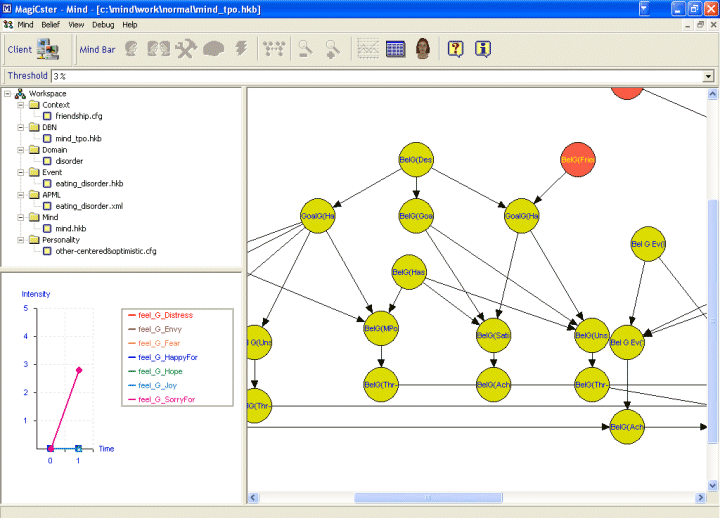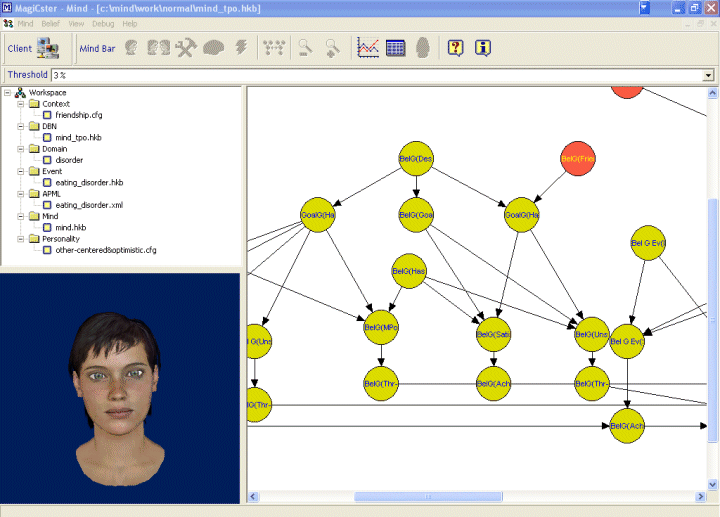University of BariDepartment of InformaticsIntelligent Interfaces | |||||||||||||||||||
| Home | Research | People | Meetings | Projects | |||||||||||||||
A tool to simulate cognitive activation of mixed emotions in artificial agents |
 |
|
Objective |
|||||||||||||||||||
|
The purpose of this tools is to simulate cognitive activation of
emotions in artificial agents, as a consequence of 'endogenous' or
'exogenous' events.  | |||||||||||||||||||
|
Participants |
|||||||||||||||||||
|
Valeria Carofiglio | |||||||||||||||||||
|
Architecture and Language |
|||||||||||||||||||
|
Updating of dynamic belief networks was implemented with Hugin's
APIs. | |||||||||||||||||||
|
Publications |
|||||||||||||||||||
|
In favour of cognitive models of emotions. Workshop on "Mind-Minding Agents" at AISB'05. Hatfield, April 2005 Dynamic models of mixed emotion activation. In D. Canamero and R Aylett (Eds): "Animating expressive characters for social interactions". John Benjamins, in press. | |||||||||||||||||||
|
How it works |
|||||||||||||||||||
As a first step, the simulation conditions have to be settled with icons in the menu-bar: the agent's personality (as a combination of weights given to its goals), a 'social context', a 'threshold' for emotion activation and a domain. Events are then introduced at every time slice, and the related evidence is propagated in the network by clicking on a icon. The updated emotional state of the artificial agent is displayed on the left-side, bottom window. In the 'agent display' mode, affect tags are automatically added to the input string of the agent's player, so as to get the agent to pronounce it with the activated emotion mixture. | |||||||||||||||||||
| Home | Research | People | Meetings | Projects | |||||||||||||||